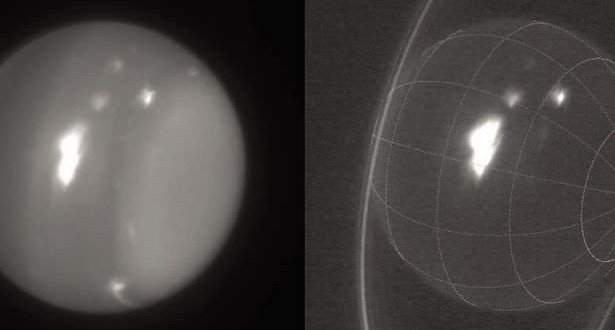Obviously fed up of all eyes in the Solar System being on that damned comet, Uranus has been kicking off with some extreme storms. It’s very unlike the milky-green gas giant, whose surface is usually rather bland.
The cloud activity is so bright that even amateur astronomers have seen signs of it in the blue-green atmosphere of the planet, which is 30 times further away from the Sun than the Earth.
Astronomers observing Uranus with the Keck Telescope in Hawaii detected eight large storms in the planet’s northern hemisphere on August 5 and 6.
One was the brightest ever measured on Uranus, accounting for 30% of all light reflected by the rest of the planet at a wavelength of 2.2 microns.
This is the “colour” of light that senses clouds just below the tropopause, where the atmospheric pressure is half what it is at the Earth’s surface.
Later observations by amateur astronomers revealed a bright spot, which scientists believe is evidence of storm activity much deeper in the atmosphere.
Co-investigator Dr Heidi Hammel, from the US Space Science Institute, said: “This type of activity would have been expected in 2007, when Uranus’s once every 42-year equinox occurred and the sun shined directly on the equator.
“But we predicted that such activity would have died down by now. Why we see these incredible storms now is beyond anybody’s guess.”
Uranus has a diameter four times that of Earth and is wrapped in an atmosphere of hydrogen and helium, plus a dash of methane that gives it a blue tint.
The findings were presented at a meeting of the American Astronomical Society’s Division of Planetary Sciences in Tucson, Arizona.
Agencies/Canadajournal
 Canada Journal – News of the World Articles and videos to bring you the biggest Canadian news stories from across the country every day
Canada Journal – News of the World Articles and videos to bring you the biggest Canadian news stories from across the country every day



